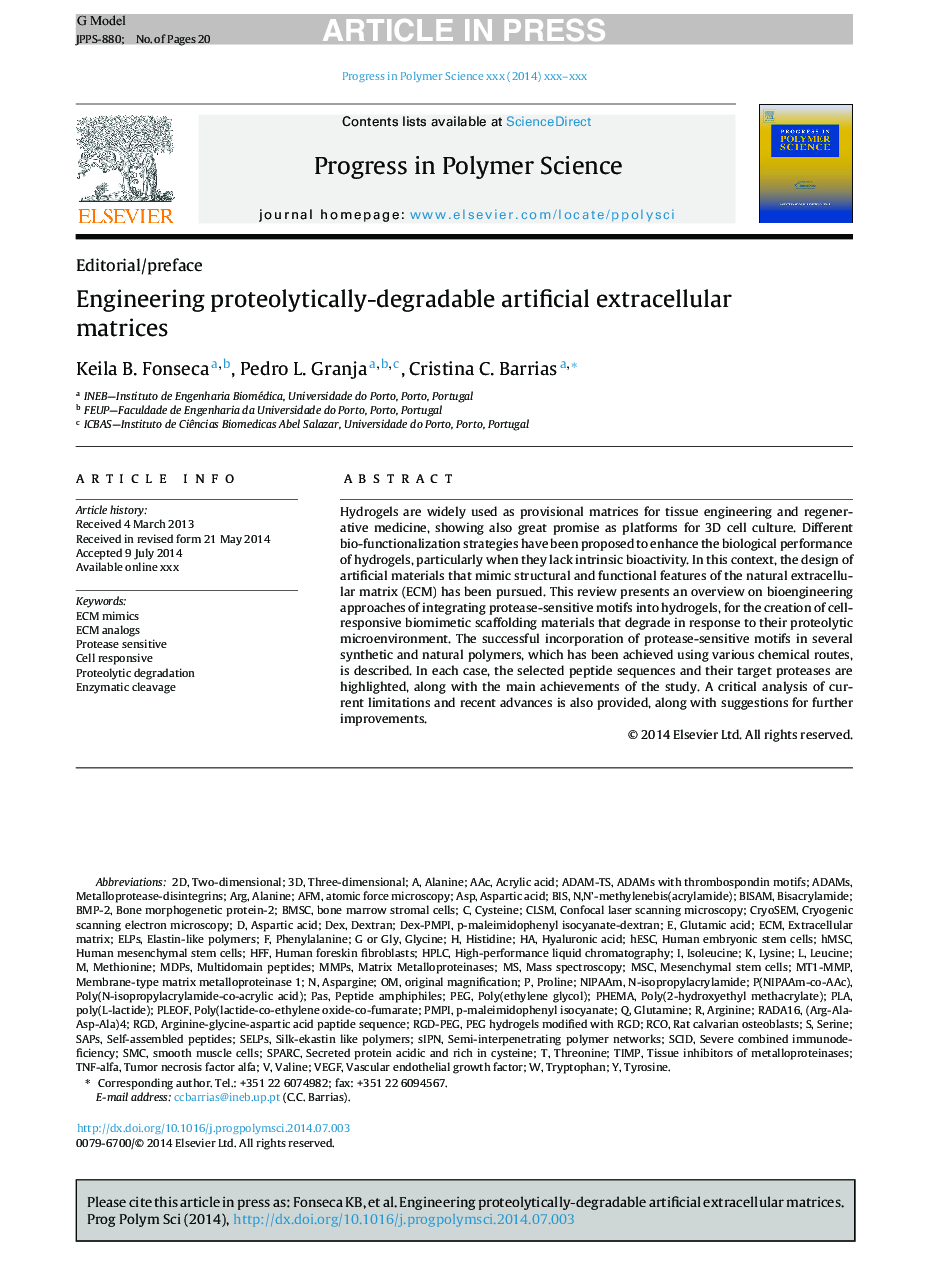| Article ID | Journal | Published Year | Pages | File Type |
|---|---|---|---|---|
| 5208131 | Progress in Polymer Science | 2010 | 20 Pages |
Abstract
Hydrogels are widely used as provisional matrices for tissue engineering and regenerative medicine, showing also great promise as platforms for 3D cell culture. Different bio-functionalization strategies have been proposed to enhance the biological performance of hydrogels, particularly when they lack intrinsic bioactivity. In this context, the design of artificial materials that mimic structural and functional features of the natural extracellular matrix (ECM) has been pursued. This review presents an overview on bioengineering approaches of integrating protease-sensitive motifs into hydrogels, for the creation of cell-responsive biomimetic scaffolding materials that degrade in response to their proteolytic microenvironment. The successful incorporation of protease-sensitive motifs in several synthetic and natural polymers, which has been achieved using various chemical routes, is described. In each case, the selected peptide sequences and their target proteases are highlighted, along with the main achievements of the study. A critical analysis of current limitations and recent advances is also provided, along with suggestions for further improvements.
Keywords
BMSCPoly(N-isopropylacrylamide-co-acrylic acid)PLAASPRGDPeptide amphiphilesBMP-2ECMSAPsAAChMSCSCIDHFFMSCMT1-MMPSPARCpHEMAsIPNSelf-assembled peptidesCryoSEMAspargineELPsRCOPMPIADAM-TSADAMs with thrombospondin motifsMDPsN-IsopropylacrylamideThree-dimensionalMmpsSMCCLSMAFMDEXADAMshESCArginineAspartic acidalanineArgHyaluronic acidglutamic acidAcrylic acidisoleucineBISProteolytic degradationthreonineTryptophanEnzymatic cleavagetwo-dimensionalDextranTIMPSerinebone marrow stromal cellshuman embryonic stem cellsMesenchymal stem cellshuman mesenchymal stem cellsSmooth muscle cellsCysteineSemi-interpenetrating polymer networksNIPAAmMass spectroscopytumor necrosis factor alfaVascular endothelial growth factorVascular Endothelial Growth Factor (VEGF)Phenylalaninehuman foreskin fibroblastsLeucineLysineExtracellular matrixMatrix metalloproteinasesMethionineTissue inhibitors of metalloproteinasesatomic force microscopyconfocal laser scanning microscopySCID, Severe combined immunodeficiencyPAShistidineValinesecreted protein acidic and rich in cysteineBone morphogenetic protein-2Prolinepoly(2-hydroxyethyl methacrylate)Poly(l-lactide)Poly(ethylene glycol)PEGHPLChigh-performance liquid chromatographyglutamineGlycine
Related Topics
Physical Sciences and Engineering
Chemistry
Organic Chemistry
Authors
Keila B. Fonseca, Pedro L. Granja, Cristina C. Barrias,
